Sepuluh Nopember Institute of Technology
| Sepuluh Nopember Institute of Technology | |
|---|---|
| Institut Teknologi Sepuluh Nopember | |
| Established | November 10, 1957 |
| Type | Public |
| Rector | Prof. Dr. Ir. Triyogi Yuwono, DEA |
Academic staff | 1,012 |
| Undergraduates | 15,013 |
| Postgraduates | 1,389 |
| Location |
Surabaya, East Java, 07°16′54″S 112°47′41″E / 7.28167°S 112.79472°ECoordinates: 07°16′54″S 112°47′41″E / 7.28167°S 112.79472°E |
| Campus |
Sukolilo campus, 1,896,000 m2 Manyar campus, 5,176 m2 Cokroaminoto campus, 4,000 m2 |
| Alumni | 45,208 |
| Colors | Blue |
| Mascot | None |
| Affiliations | ASAIHL,[1] ASEA UNINET,[2] AUAP[3] |
| Website |
www |
|
motto = Cerdas Amanah Kreatif Intelligentia Fides Ingenium | |
Institut Teknologi Sepuluh Nopember (ITS) is an Indonesian public university located in Surabaya, East Java, with strong emphasis on scientific, engineering, and technological education and research. ITS has five faculties containing 27 academic departments which occupy an area of 180 hectares.
ITS was founded at November 10, 1957, as its establishment charter was signed by Soekarno, then President of Republic of Indonesia. Initially, Sepuluh Nopember Technical College had only two departments, Civil Engineering and Mechanical Engineering. On his speech, President Soekarno himself gave the strong emphasis on the Spirit of Sepuluh Nopember, remembering the famous Battle of Surabaya which reached its heat on November 10, 1945 and annually being commemorated as Heroes Day in Indonesia.
In 2001, in response to the vision of Abdurrahman Wahid, then President of Republic of Indonesia, ITS introduced faculty of information technology in which consist of two departments: Informatics Engineering and Information Systems. Today, ITS's educational disciplines have expanded beyond sciences and engineering into fields such as arts and business management.
In addition, two polytechnics (Electronic State Polytechnic, PENS, and Shipbuilding State Polytechnic, PPNS) operate independently on the same area at ITS' main campus in Sukolilo, an area in the vicinity of East Surabaya.
History
Foundation and vision
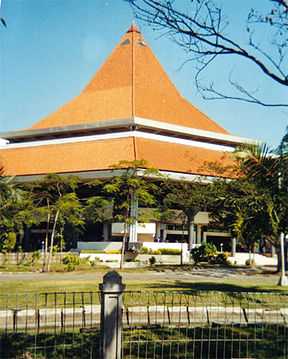
ITS was founded by Angka Nitisastro, a medical doctor, and his friend Soedjasmono, an engineer. Once upon a time, the two visionaries had a conversation on the Kenjeran Beach, eastern Surabaya. "Look at that poor fishermen. We must do something to change the game, " said the doctor to his friend. Realizing the important role of science and technology to shape the future of people, the two visionaries shared their ideas with another several people in a group of Indonesian Engineers Association (PII), to provide higher education in Surabaya that focused on science and technology. During the years of national revolution, they build a foundation to establish technical education in Surabaya.
President Soekarno, who himself was an engineer and born in Surabaya, once thought the idea was ridiculous. "How brave are you to have such an idea.." said Bung Karno laughing. But later, Perguruan Teknik 10 Nopember Surabaya' or "10 Nopember Technical College" was established in November 10, 1957. Its establishment charter was signed by the Indonesia's first president, Soekarno himself. On his speech, Soekarno emphasized that education is not only about investment of skill, but also investment of mentality.
Early years
In 1957, ITS only had two departments, Civil Engineering and Mechanical Engineering. Three years later, ITS expanded with the opening of Electronic Engineering, Naval Architecture and Shipbuilding Engineering and Chemical Engineering departments. These departments then changed their status into faculties.
In 1965, ITS again opened two faculties, Architectural Engineering and Faculty of Natural Sciences. So, in 1965, ITS had seven faculties: Faculty of Civil Engineering, Faculty of Mechanical Engineering, Faculty of Chemical Engineering, Faculty of Electrical Engineering, Faculty of Naval Architecture and Shipbuilding Engineering, and Faculty of Natural Science.
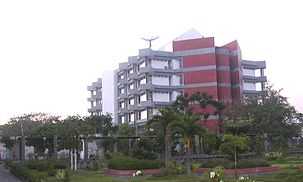
In 1972, the campus of the Faculty of Civil Engineering was moved into Jl. Manyar 8 Surabaya; the ITS campuses was separated. In the late of 1975, the Faculty of Architectural Engineering and Faculty of Natural Science was moved into Jl. Cokroaminoto 12A, Surabaya.
Today, ITS has three campuses area: Cokroaminoto, Manyar, and Sukolilo. The Sukolilo campus is the biggest areas. The development of campus area geared up at 1977, two decades since the conversation between dr. Angka Nitisastro and Ir. Soedjasmono that defined the fighting spirit of ITS character to become Indonesia's best university.
Development
In 1977, with financial aid from ADB, ITS started to build a campus complex in the Sukolilo district in eastern Surabaya. Since then, all departments and faculties have moved to the new campus.
In the early 1980s reorganization took place in ITS, the former faculties are down-graded into departments and merged into common discipline faculties. Hence the new ITS organization comprises 4 faculties, namely the Faculty of Mathematics and Natural Sciences, Faculty of Industrial Technology, Faculty of Civil Engineering and Planning, and the Faculty of Marine Technology.
In 1988, ITS opened its first polytechnic branch, Shipbuilding Polytechnic of Surabaya and followed by the second, Electronic Engineering Polytechnic of Surabaya.
In 2001, at the suggestion of the Indonesian fourth president, Abdurrahman Wahid, a Faculty of Information Technology was created. It consists of a department of Computer Science and a newly created department of Information System.
In 2010, December 14, President Dr. Susilo Bambang Yudhoyono officially signed the establishment of the Robotics Center Building (Gedung Pusat Robotika) in ITS campus, Sukolilo, Surabaya city.
In 2013, ITS, as an institute of technology founded by a medical doctor by the name of dr. Angka Nitisastro, has its first doctoral graduate on medical engineering, Ingrid Nurtanio, lecturer at University of Hassanuddin..

Research and world-class achievements
From Widya Wahana Project, Indonesian first solar-powered ship, to Jalapatih Project, Indonesia first solar-powered car, ITS is well known as a pioneer of cutting-edge researches in Indonesia. ITS is regarded as champion in many world-class competitions.
Naval architecture
2012, ITS participating in the Atlantic Challenge at Bantry, Ireland, and won The Spirit of Atlantic Challenge. .
ITS launched Indonesian first solar-powered ship, and competed on world competition, Dong Energy Challenge 2014 in Netherlands.
Robotic engineering
2012, team of student was awarded Toyota Award at ABU Asia-Pacific Robot Contest (ABU Robocon) in Hong Kong.
Concept car
Decades ago, 20th century, ITS launched Indonesian first solar-powered car, Widya Wahana. Widya Wahana is the first Indonesian solar-powered car tested on foreign continent, Australia, in world solar car competition.
2012, urban energy-efficient concept car, Sapu Angin, won the Asia Pacific energy-saving car competition titled "Shell Eco Marathon Asia 2012" at Sepang, Malaysia. .
In 2013, ITS (Sapu Angin Speed) won Best Rookie Award of ICV at Student Formula Japan.
2013, ITS won Shell Helix Tribology Award (off-track award) on Shell Eco Marathon Asia 2013. . At the same year, Spectronic VI from ITS won 1st place on presentation poster and 3rd place on competition at Chem-e-car Competition in Chemeca 2013, Brisbane, Australia.
2014, ITS launched biggest electric bus in Indonesia, funded by PT Telkomsel.
2015, ITS won Shell Eco Marathon (SEM) Asia 2015, Manila, Philippines, on urban concept diesel category.
International competition
2015, R Aditya Brahmana and Yabes David Losong awarded The Best Social Venture Challenge, Harvard National Model United Nations (HNMUN) 2015.
ITS Student Choir won Gold Prize in Busan Choral Festival and Competition 2010, South Korea, (Classical Mixed Choir category and Ethnic Choir category) and 1st Prize with Gold Diploma in Rimini International Choral Competition 2011, Italy, on D Class (Ethnic/Folk Song Choir)..
2013, ITS Student Choir won 3rd prize on Institucio Pulg-Porret Competition Folk Music in Festival Internacional de Musica de Cantonigros, Spain..
2013, Sri Fatmawati, Ph.D, lecturer and researcher at Department of Chemistry, was awarded International Fellowship L'Oreal for Women in Science 2013 in France.
Faculties and departments
There are five faculties and two autonomous polytechnics in ITS. These polytechnics offer diploma programmes.
- Faculty of Mathematics and Natural Science
- Department of Physics
- Department of Mathematics
- Department of Statistics
- Department of Chemistry
- Department of Biology
- Faculty of Industrial Technology
- Department of Mechanical Engineering
- Department of Electrical Engineering
- Department of Chemical Engineering
- Department of Engineering Physics
- Department of Industrial Engineering
- Department of Material & Metallurgy Engineering
- Department of Physics Engineering
- Department of Business Management
- Department of Multimedia and Network Engineering
- Faculty of Civil and Planning
- Department of Civil Engineering
- Department of Architecture
- Department of Environmental Engineering
- Department of Industrial Product Design
- Department of Geomatics Engineering
- Department of Regional and Urban Planning
- Department of Geophysics Engineering
- Faculty of Marine Technology
- Department of Naval Architecture and Shipbuilding Engineering
- Department of Marine Engineering
- Department of Ocean Engineering
- Study Program of Sea Transportation
- Faculty of Information Technology
- Department of Informatics Engineering
- Department of Information Systems
- Electronic Engineering Polytechnic Institute of Surabaya operates independently since 2012
- Surabaya Shipbuilding State Polytechnic operates independently since 2012
Campuses
ITS has three campuses in Surabaya. Its major campus is located at Sukolilo, where all undergraduate programs are located here along with the postgraduate buildings, administrative building, main library, faculties housing, student community center, football stadium, jogging track, and student dormitory that could accommodate 1200 freshmen.
Smaller campus is located in Manyar district, providing Civil Engineering diploma course.
Third campus is located at Cokroaminoto Street, providing postgraduate Technology Management Magister course.
Research
- Research and Society Service Centre (LPPM)
- Environmental Centre
- Energy Centre
- Earth and Disaster Mitigation Centre
- Marine Centre
- Industrial Centre
- IT & Multimedia Communication Centre
- Continuing Education Unit
- Intellectual Property Rights Unit
- RIMA-ITS (Research Institute For Web and Mobile Application - ITS )
- Laboratory for Housing and Human Settlements
- Robotic Research Centre
Student activities
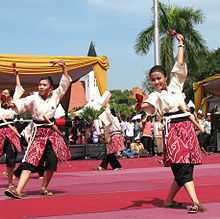
ITS has variety of student organizations involving in politic, religiosity, sports, arts, and other activities.
- Student Executive Organization.
- Student Legislative.
- Manarul 'Ilmi Masjid Members.
- PLH Siklus ITS, students environmental organization
- ITS Students Choir
- ITS Radio
- Pramuka ITS
- "Tiyang Alit" Theatre
- "dr Angka" students cooperative
- Workshop of Entrepreneurship & Technology (WE&T-ITS)
- Maritime Challenge
- Loedroek ITS. Loedroek basically is traditional East Java play. However, it is converted to be more modern and contemporary style.
There are also organizations for religious activity. Every department also has its own student union.
Academic facilities and campus life
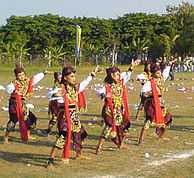
Overall, ITS occupies a land area of 187 hectares.
Graduations are conducted at a general functional hall with a capacity of 4,000. Sport facilities can be found on the campus: a stadium and football ground, futsal courts, basketball courts, tennis courts, wall climbing, gymnasium and indoor badminton courts, rafting canal and jogging tracks.
Prominent alumni
Politics and public service
- Satya Widya Yudha, Indonesian MP, House of Representatives of the Republic of Indonesia, Golkar Party, graduated from Department of Ocean (Offshore) Engineering
- Ridwan Hisyam, Indonesian MP, House of Representatives of the Republic of Indonesia, Golkar Party, graduated from Department of Naval Architecture Engineering
- Asman Azzam Natawiyana, Indonesian MP, House of Representatives of the Republic of Indonesia, Democrat Party, graduated from the Department of Electrical Engineering
- Bambang Haryo Sukartono, Indonesian MP, House of Representatives of the Republic of Indonesia, Gerindra Party, graduated from the Department of Naval Architecture
- M. Farid Al Fauzi, Indonesian MP, House of Representatives of the Republic of Indonesia, United Development Party, graduated form the Department of Chemical Engineering
- Fandi Utomo, Indonesian MP, House of Representatives of the Republic of Indonesia, Democrat Party, graduated from the Department of Electrical Engineering
- Sigit Sosiantomo, Indonesian MP, House of Representatives of the Republic of Indonesia, Prosperous Justice Party, graduated from the Department of Architecture
- Muh. Nuh, Minister of Education and Culture, Republic of Indonesia, was formerly Minister of Communication and Information and the Rector of ITS in 2003-2007, graduated from the Department of Electrical Engineering
- Tri Rismaharini, mayor of City of Surabaya, first woman who lead the Indonesia's second largest city, graduated from Department of Architecture
- Widi A Pratikto, secretary general of D-8 Organization for Economic Cooperation, was formerly secretary general of Ministry of Marine Affairs & Fisheries, Republic of Indonesia, graduated from the Department of Naval Architecture & Shipbuilding Engineering
- Syarieq Widjaja, secretary general of the Indonesia Ministry of Marine Affairs and Fisheries, graduated from Department of Naval Architecture Engineering
- Irnanda Laksanawan, former deputy minister for primary industries at the State Enterprises Ministry, graduated from the Department of Mechanical Engineering
- Ahmad Mustahid Astari, former Indonesian MP, Chairman of Association of Former Member of House of Representatives of the Republic of Indonesia (Perhimpunan Mantan Anggota DPR RI, Padmanagri)
- Ir. Sutjipto Soedjono, former Indonesian MP, former Vice Chairman of People's Consultative Assembly of the Republic of Indonesia, former secretary general of Indonesian Democratic Party-Struggle or PDI-Perjuangan, inventor of spider web's model for buildings foundation, born at August 13, 1945 and died at November 24, 2011, graduated from Civil Engineering
- Herman Widyananda, former Vice Chairman of Audit Board of the Republic of Indonesia, former chairman of Islamic Student Association (HMI, 1988-1990), born at May 28, 1960, and died at June 20th, 2011, graduated from Department of Architecture
- Dwi Soetjipto, CEO of PT Pertamina, former CEO of PT Semen Indonesia, graduated from Department of Chemical Engineering.[4]
- Arief Wibowo, President Director of PT Garuda Indonesia, former President Director of CITILINK (Garuda Indonesia Group), graduated from Department of Mechanical Engineering.
- Ir Musyanif, former President Director of PT Pembangunan Perumahan (PERSERO), graduated from Department of Civil Engineering.
Show businenes and entertainment
- Ram Soraya, owner of Soraya Intercine Films, producer of Sembilan Wali (Wali Sanga, 1985), Depan Bisa Belakang Bisa (1987) Eiffel I'm in Love(2003), 5CM (2012), and other movies.
Prominent attendees

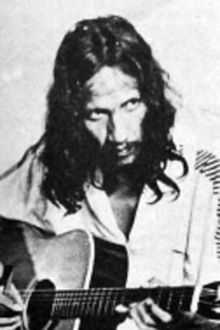
- Susilo Bambang Yudhoyono, named as one of 100 Most Influential People in the World in 2009 by TIME Magazine, currently President of Republic of Indonesia, briefly studied in the Department of Mechanical Engineering before he entered the Indonesian Military Academy (AKABRI)
- Hermawan Kartajaya, named as one of 50 Gurus Who Have Shaped the Future of Marketing by the United Kingdom’s Chartered Institute of Marketing, president of World Marketing Association and co-founder of Asia Marketing Federation, dropped out from Department of Electrical Engineering due to economic problems
- Hendy Setiono, named as Asia's Best Entrepreneur Under 25 by BusinessWeek Magazine and won Asia-Pasific Entrepreneurship Award 2009 by Enterprise Asia, founder and President Director of Baba Rafi Enterprise, dropped out from Informatics Engineering
- Gombloh, singer and composer of the legendary Kebyar-Kebyar which was ranked at the second place on the list of Indonesia's Best 150 Songs of All Time by Rolling Stone Indonesia magazine, born in Jombang at July 14, 1948 and died in Surabaya at January 9, 1988, dropped out from Architecture Department